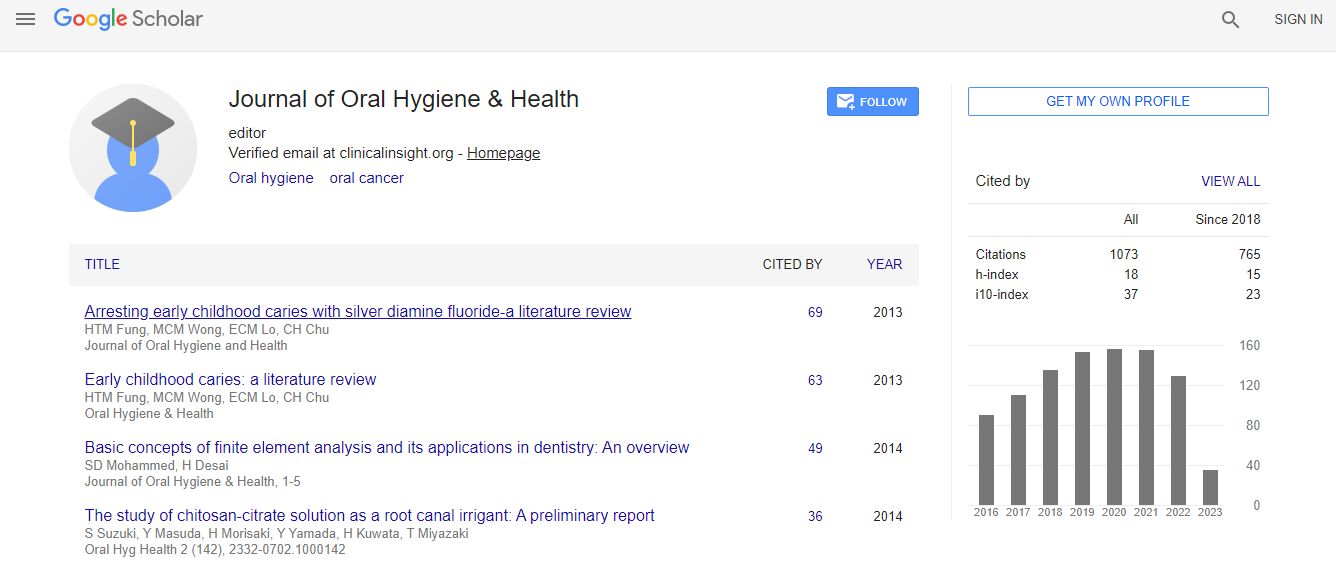Research Article
A Color Analysis of Smoker’s Melanosis Using a Non-Contact Type Dental Spectrophotometer
Katayama Ono T1*, Naito T2, Makino M2 and Sato H1,3
1Oro-facial Plastic Medical Center, Department of Oral & Maxillofacial Surgery, Fukuoka Dental College, Fukuoka, Japan
2Section of Geriatric Dentistry, Department of General Dentistry, Fukuoka Dental College, Fukuoka, Japan
3Section of Fixed Prosthodontics, Department of Oral Rehabilitation, Fukuoka Dental College, Fukuoka, Japan
- *Corresponding Author:
- Tomoko Katayama Ono
Oro-facial Plastic Medical Center
Fukuoka Dental College, 2-15-1
Tamura, Sawara-ku
Fukuoka 814-0193, Japan
Tel: 81924010411
Fax: 81924010513
E-mail: katat@college.fdcnet.ac.jp
Received Date: July 16, 2014; Accepted Date: August 14, 2014; Published Date: August 20, 2014
Citation: Katayama Ono T, Naito T, Makino M, Sato H (2014) A Color Analysis of Smoker’s Melanosis Using a Non-Contact Type Dental Spectrophotometer. J Oral Hyg Health 2:160. doi:10.4172/2332-0702.1000160
Copyright: © 2014 Katayama Ono, et al. This is an open-access article distributed under the terms of the Creative Commons Attribution License, which permits unrestricted use, distribution, and reproduction in any medium, provided the original author and source are credited.
Abstract
Objective: The aim of this study was to measure the gingival color precisely and explore factors affecting gingival pigmentation.
Materials and Methods: Sixty-seven healthy volunteers (22 females and 45 males, average 28 years of age) were recruited for this study. We measured the color of the attached gingiva at the interdental papilla of the upper and lower right central incisors, lateral incisors and canines using a non-contact type dental spectrophotometer. The measured color was quantified according to the CIEL*a*b* 1976 criteria. Oral health indices, such as the plaque control record, gingival inflammation and probing pocket depth, were determined manually. Lifestyle factors that may affect gingival pigmentation, such as smoking and medications, were also recorded according to a questionnaire.
Results: Twenty-one subjects were current smokers, 12 were former smokers and 34 were non-smokers. On the gingival color analysis, the L* and b* values in the current smokers were significantly lower than those in the former and non-smokers in all areas, except the L* value of the lower canine in the former smokers. On the other hand, the a* value was lower in the current smokers than in the non-smokers for the upper medial, lower lateral incisor and canine gingiva. Among smokers, the L*, a* and b* values were lower in the patients with a Brinkman index (BI) of ≥ 100 than in those with a BI=0. In addition, the L* and b* values were lower in the patients with a BI of ≥ 100 than in those with 0 <BI<100.
Conclusions: The brightness and chroma of the gingiva were found to be significantly lower in current smokers than in non- and former smokers and similar between the latter two groups. Our findings suggest that the gingival color is significantly influenced by the smoking status, papillary marginal attached index and BI.

 Spanish
Spanish  Chinese
Chinese  Russian
Russian  German
German  French
French  Japanese
Japanese  Portuguese
Portuguese  Hindi
Hindi 
